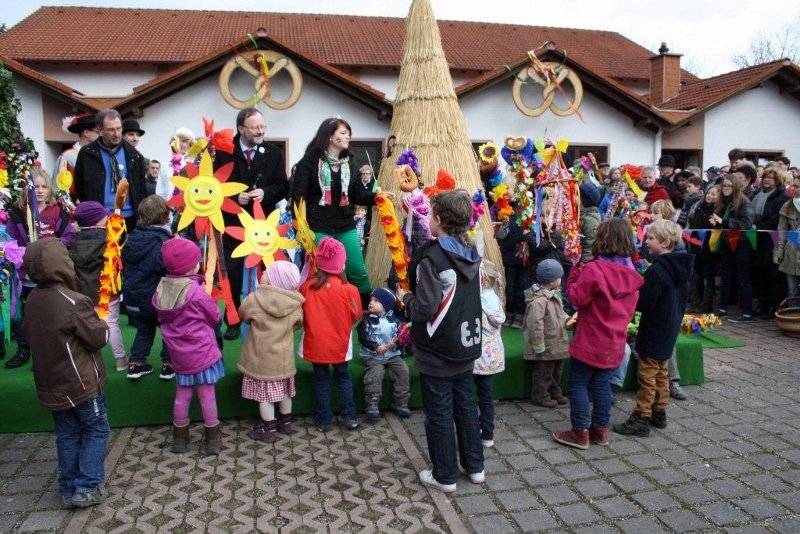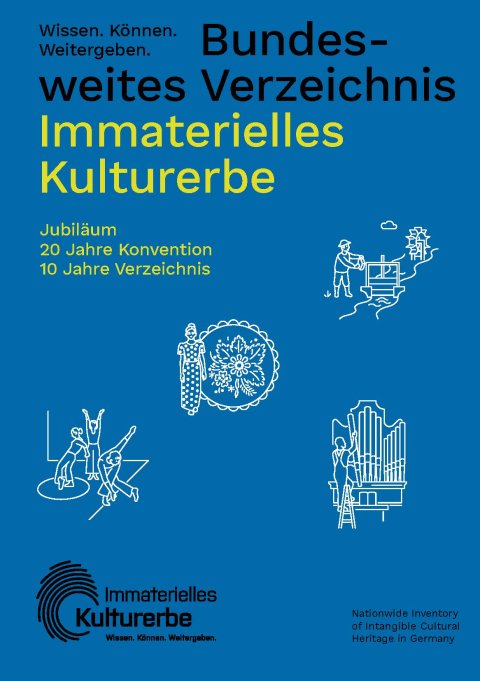Nationwide Inventory of Intangible Cultural Heritage
Forst’s Twitthimble-Game

Every year on Laetare Sunday, the Twitthimble Game (“Hanselfingerhut-Spiel”) in Forst in Rhineland-Palatinate is performed a total of six times. It is a folk-play with rude words, which, according to tradition, consists of different parts. The play is performed by six male players.
At first, there is a fight between winter and summer, which is won by the latter. This is embodied by two players who are sitting in a summer cottage made of ivy and a winter cottage made of straw. In the end of the performance the winter cottage is burned.
The figure of the so-called "Henrich-Fähnrich", who is dressed like a mercenary with feather hat, saber and money-box, serves as a judge.
The main figure of the game is the "Hanselfingerhut". He wears a patchwork of colorful rags and playing cards and represents a vagrant who lives outside the village in the marsh meadows.
The so-called "Scherer," a barber dressed in dark jacket, white trousers, and a hat, is supposed to cultivate the “Hanselfingerhut” by shaving and blood-letting with an oversized wooden razor.
The last figure is the "Nudelgret", who provides fresh pretzels for all during the play.
The festival has been documented since 1721, but presumably took place even earlier. The date of the play coincides with another tradition in Forst: Felix-Christoph Traberger, a reader at Court, made a donation in 1600, so that Forst’s children would receive food on Laetare Sundays. Still today, all children get a "Spitzweck" made from yeast dough during the festival.
Both, festivity and commitment of the players, are coordinated and supported by the “Verein für Brauchtum und Dorfverschönerung” (Association for Customs and Village Embellishment) as well as by the municipality. As the first festival of the year, it is an important village feast and it increasingly gains popularity.


